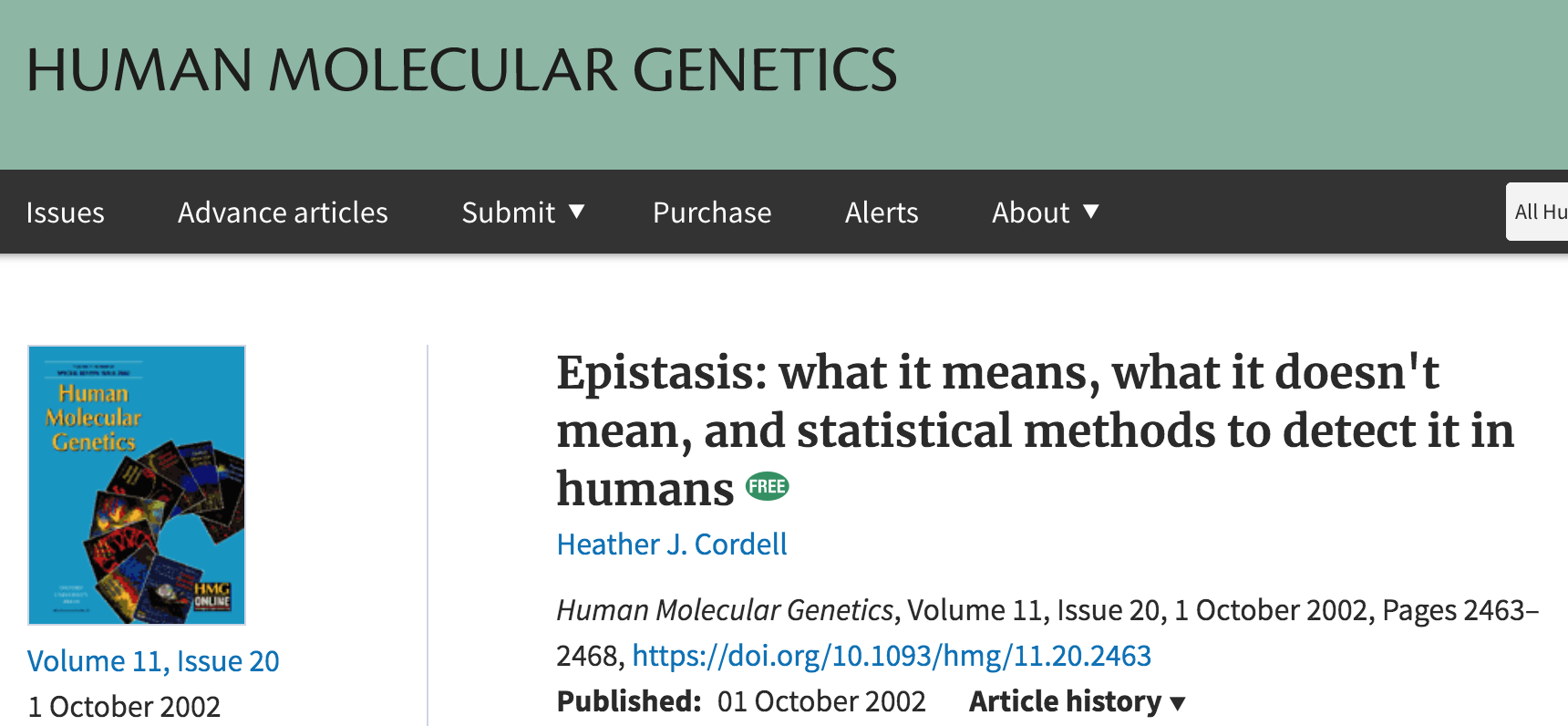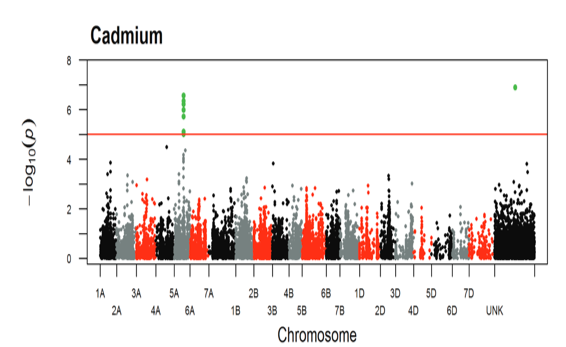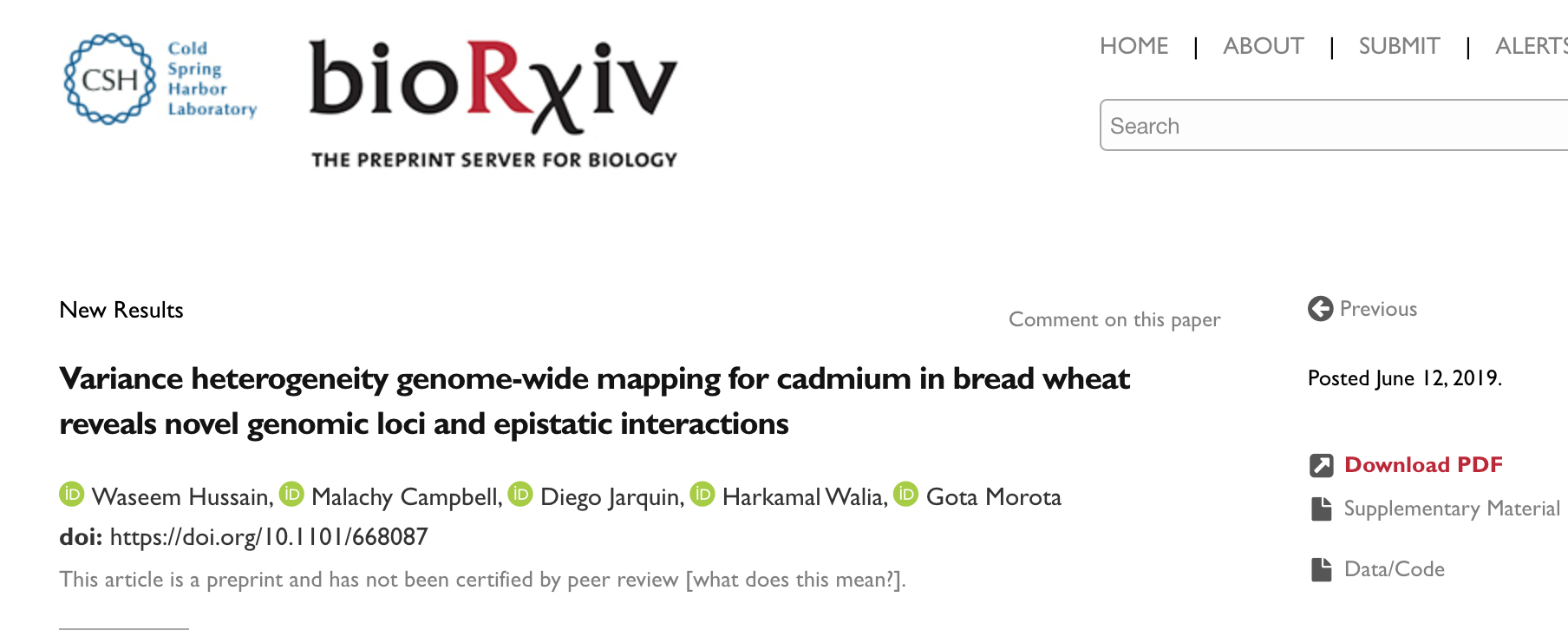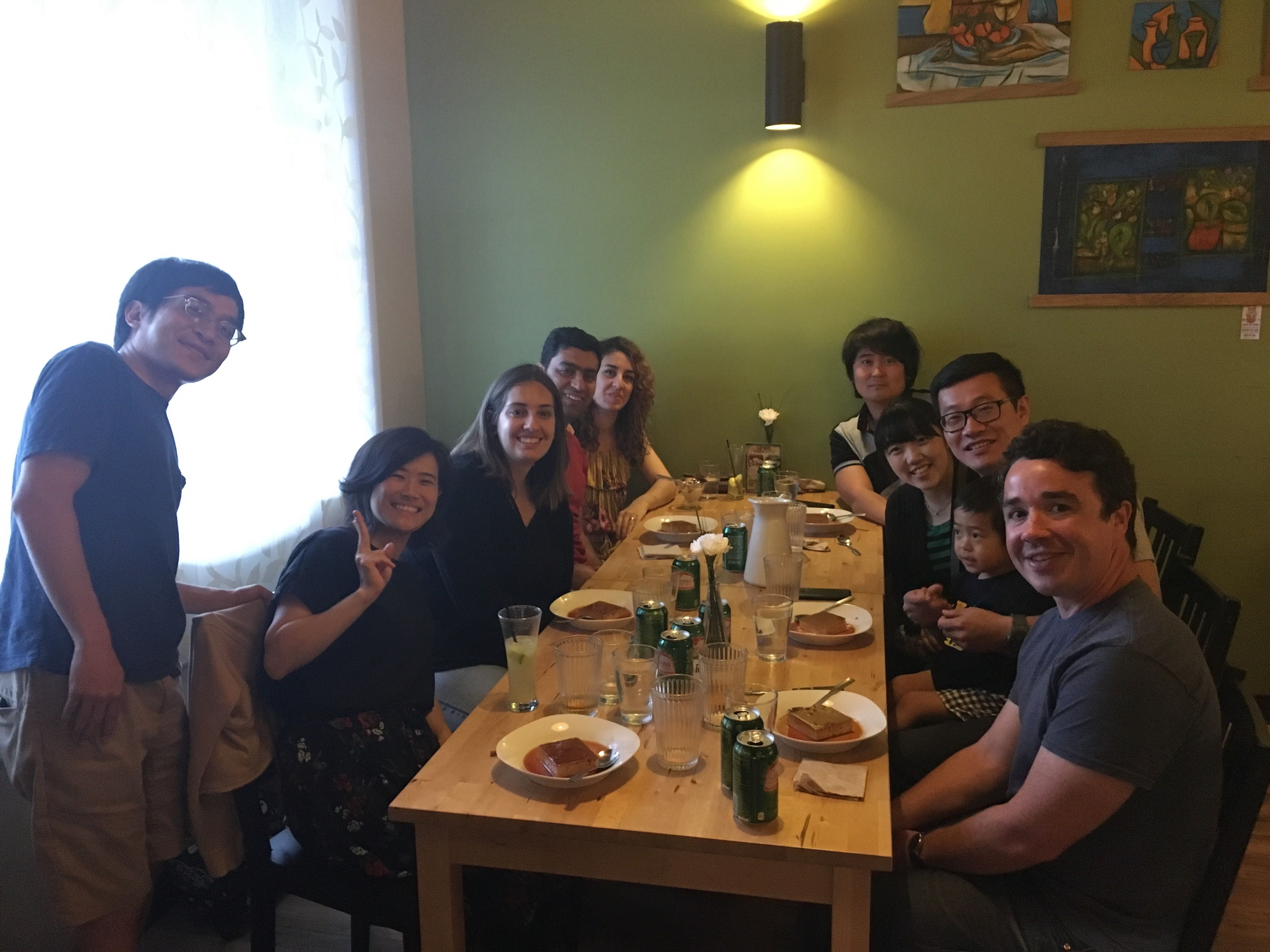class: center, middle, inverse, title-slide # Variance heterogeneity analysis ## Quantitative Genetics Short Course <span class="citation">@UFV</span> ### Gota Morota <br /><a href="http://morotalab.org/" class="uri">http://morotalab.org/</a> <br /> ### 2019/11/26 --- # Epistasis what is it?  --- # How to parameterize response variable `\(\mathbf{y}\)` ? Example: 50,000 SNP panel - additive model - 50K effects to estimate - additive + dominance model - 50K + 50K effects to estimate! - additive + dominance + second-order epistasis model - 50K + 50K RV + `\({50\text{K} \choose 2}\)` effects to estimate 1. Overparameterization!!!!! 2. Curse of dimensionality --- # Mean heterogeneity analysis - mean value difference between genotypes - average effect of allele substitution - standard GWAS is designed to capture these genetic signals <img src="mGWAS.png" height="406px" width="650px"/> --- # Variance heterogeneity analysis - heterogenity of variance between genotypes - variance heterogeneity loci (vQTL) or variance GWAS (vGWAS) - standard GWAS is not able to capture these genetic signals <img src="vGWAS.png" height="406px" width="650px"/> --- # Example: Variance heterogeneity locus <img src="varQTL.png" height="406px" width="650px"/> --- # Variance heterogeneity loci Variance heterogeneity loci are potentially involved in - buffer the impact of cryptic genetic variations - release of hidden genetic variation - developmental stability - phenotypic plasticity .pull-left[ <img src="LynchWalsh.jpg" height="256px" width="250px"/> ] .pull-right[ <img src="WalshLynch.jpg" height="256px" width="250px"/> ] -- Epistasis --- # Non-epistatic variance QTL vs. Epistatic variance QTL <img src="PGRP.png" height="406px" width="650px"/> --- # Association mapping panel - hard winter wheat association panel of 299 lines - cadmium concentration - 90,000 markers (Wang et al. 2014)  Guittieri et al., 2015 --- # Double generalized linear model (DGLM) $$ `\begin{align} \mathbf{y} &= \mathbf{1}\mu_m + \mathbf{X}\mathbf{b} + \mathbf{S}_m a_m + \boldsymbol{\epsilon} \\ \boldsymbol{\epsilon}_i \sim& N(0, \sigma^{2}_{\epsilon_i}) \\\ \log (\sigma^2_{\epsilon_i}) &= \mathbf{1}\mu_v + \mathbf{S}_v a_v. \end{align}` $$ - `\(\sigma^2_{\epsilon_{i}} \sim \frac{ \hat{\epsilon}_i^2 }{ 1 - h_{ii}}\)` is fitted using GLM of a gamma distribution with a log link function, where weights are provided by `\(\frac{1 - h_{ii}}{2}\)` and a linear predictor equals to a single marker covariate `\(\mathbf{s}\mathbf{a}\)`. - equivalent to modeling `\(\mathbf{y} \sim N(\mathbf{1}\mu_m + \mathbf{X}\mathbf{b} + \mathbf{S}_m a_m, \exp(\mathbf{1}\mu_v + \mathbf{S}_va_v) )\)` - works in an iterative manner between the mean and variance parts of the model --- # Hierarchical generalized linear model (HGLM) $$ `\begin{align} \mathbf{y} &= \mathbf{1}\mu_m + \mathbf{X}\mathbf{b} + \mathbf{S}_m a_m + \mathbf{Z}\mathbf{u} + \boldsymbol{\epsilon} \end{align}` $$ - `\(\mathbf{u} \sim N(0, G \sigma^2_g)\)` is assumed to be a stochastic Gaussian process with mean zero and covariance function defined by a genomic relationship matrix `\(\mathbf{G}\)` Variance GWAS - equivalent to peforming vGWAS after adjusting for potential covariates and mean-controlling effect --- # Epistasis analysis Pairwise interaction analyses for significant variance heterogenity markers $$ `\begin{align*} \mathbf{y} &= \mathbf{1}\mu + \mathbf{X}\mathbf{b} + \mathbf{S}_j\mathbf{a}_j + \mathbf{S}_k\mathbf{a}_k + ( \mathbf{S}_j \mathbf{S}_k)\nu_{jk} + \boldsymbol{\epsilon} \end{align*}` $$ - `\(\mathbf{X}\)` is the incident matrix for the first four PCs - `\(S_j\)` and `\(S_k\)` are SNP codes for the jth and kth markers --- # Results: Mean and variance GWAS <img src="circle1.png" height="506px" width="600px"/> --- # Results: Variance GWAS loci <img src="violin1.png" height="506px" width="600px"/> --- # Results: Epistasis analysis <img src="epi1.png" height="506px" width="600px"/> --- # Preprint  --- # Morota lab at Virginia Tech  <img src="SabrinaParty.jpg" height="506px" width="600px"/>